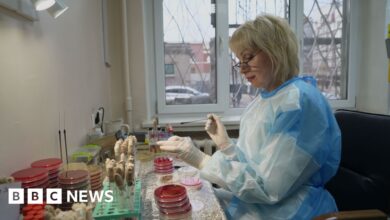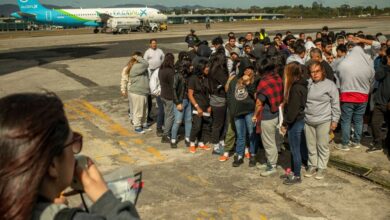Indian tribes sought to bring ancestral remains home from British museums
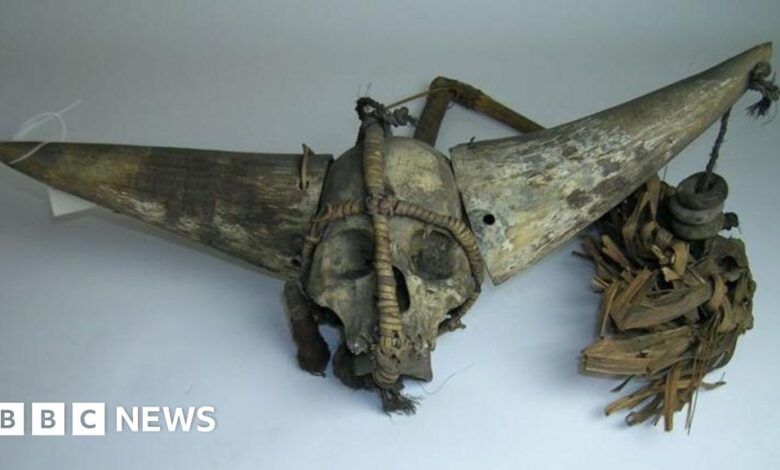
 Alok Kumar Kanungo
Alok Kumar KanungoLast month, Ellen Konyak was shocked to discover that a 19th-century skull from India’s northeastern state of Nagaland had been auctioned in Britain.
The horned skull of a Naga tribe was among thousands of artifacts that European colonial administrators collected from the state.
Konyak, a member of the Naga Forum for Reconciliation (NFR), which is working to bring these human remains home, said the news of the auction worried her.
“It is shocking to see people still auctioning off the remains of our ancestors in the 21st Century,” she said. “It is very insensitive and deeply hurtful.”
The Swan at Tetsworth, the UK-based antiques center that auctioned the skull, advertised it as part of their “Curious Collectors Sale”, worth from £3,500 ($4,490) to £4,000 ($5,132). Next to the skull – from a Belgian collection – the auction of shrunken heads of the Jivaro people of South America and the skull of the Ekoi people of West Africa.
Naga scholars and experts objected against sales. The Chief Minister of Nagaland, Konyak’s home state, wrote a letter to India’s Ministry of External Affairs describing the act as “dehumanizing” and “a continuation of colonial violence against our people”.
Auction house withdrew the sale after outcrybut for the Naga people, this incident has revived memories of their violent past, leading them to continue calling for the repatriation of their ancestral remains kept or displayed far away from their homeland.
Scholars suggest that some of these human remains were exchanged items or gifts, but others may have been taken without the owner’s consent.
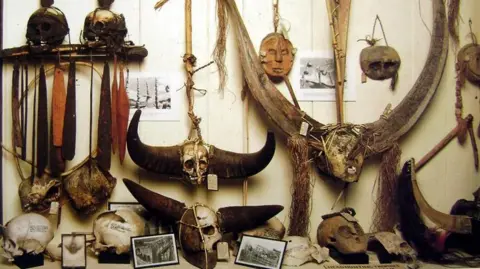 Alok Kumar Kanungo
Alok Kumar KanungoAlok Kumar Kanungo, a scholar of Naga culture, estimates that the UK’s public museums and private collections alone hold around 50,000 Naga artifacts.
Oxford University’s Pitt Rivers Museum (PRM), which has the largest Naga collection, displays about 6,550 artifacts taken from the state, including 41 human remains. There is also a museum human remains from several other states of British India.
But in recent years, experts say, with growing ethical concerns about collecting, selling and displaying human remains, many collectors are reconsidering their approach.
Kanungo said human remains have become “white elephants” for museums.
“They are no longer objects that can be discarded or owned by their owners; no longer a source of tourist dollars; no longer can they be used to portray the Naga people as ‘uncivilized’; and has recently become an emotional and political icon.” charging issue.”
So museums have begun returning human remains from communities such as New Zealand’s Maori tribes, Taiwan’s Mudan warriors, Australian aborigines and native Hawaiians.
In 2019, PRM told the BBC it had returned 22 such items.
A museum spokesman told the BBC that the number was now up to 35. [objects] All have been returned to Australia, New Zealand, the US and Canada.”
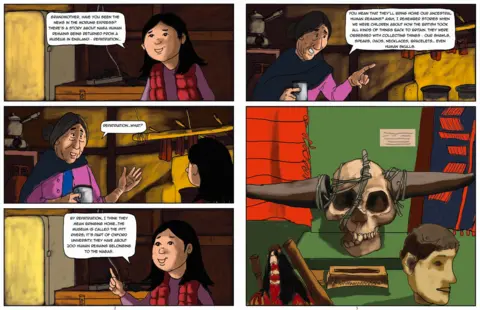 Arkotong Longkumer & Meren Imchen
Arkotong Longkumer & Meren ImchenAs part of an ethics review, the museum removed the Naga skulls from public display in 2020 and placed them in storage. This is the time FNR requested their repatriation first time.
The museum said it has not yet received a formal request from Naga descendants and that the process of returning human remains “could take from 18 months to several years, depending on the complexity of the case.” job”.
Repatriating human remains is more complicated than returning artifacts. It requires extensive research to determine whether artifacts were collected ethically, to identify descendants, and to navigate complex international regulations on moving descendants’ remains. People.
The Naga Forum established a group called Recovery, Rehabilitation and Decolonization under anthropologists Dolly Kikon and Arkotong Longkumer to facilitate the return.
“It’s a bit like detective work,” Longkumer said. “We have to sift through different layers of information and try to read between the lines to really figure out the exact nature of the collections and where they come from.”
But for the Naga people, the process is about more than just logistics. “We are dealing with human remains,” Konyak said. “It’s an international and legal process, but it’s also a spiritual process for us.”
The group traveled to villages, met Naga elders, held lectures and distributed educational materials such as comics and videos to spread awareness.
They are also trying to build consensus around topics such as the final rites of repatriated remains. Most Naga people today practice Christianity, but their ancestors were animists and observed various birth and death rituals.
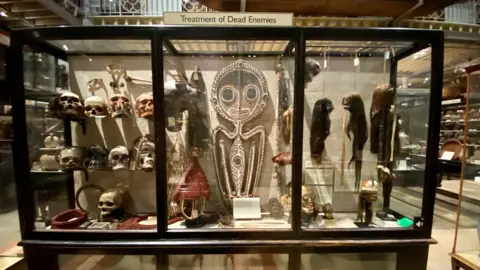 Pitt River Museum
Pitt River MuseumThe team discovered that even the Naga elders were unaware that their ancestors’ remains were in a foreign land. Anthropologist and archaeologist Tiatoshi Jamir said an elder told him that this could cause “the souls of their ancestors to rest restlessly.”
Jamir said even he did not know about the skulls on display in foreign museums until he read about them in a local newspaper in the early 2000s.
The British took over the Naga area in 1832 and in 1873 introduced a special permit for travelers – known as the Inner Pass – to strictly control access to the area.
Historians say that colonial administrators quelled any uprisings and often burned Naga villages to subdue them. erasing most of their important cultural markers such as paintings, carvings and artifacts.
Konyak said she discovered that one of the human remains on PRM’s list belonged to someone from her village and tribe.
“I was like, ‘Oh my God! It belongs to one Mine ancestors’,” she told the BBC.
She has not yet decided how the final rites will be performed once the remains are returned.
“But we want them back as a show of respect for our elders,” she said. “To take back our history. To confirm our story.
Follow BBC News India on Instagram, YouTube, Twitter And Facebook


